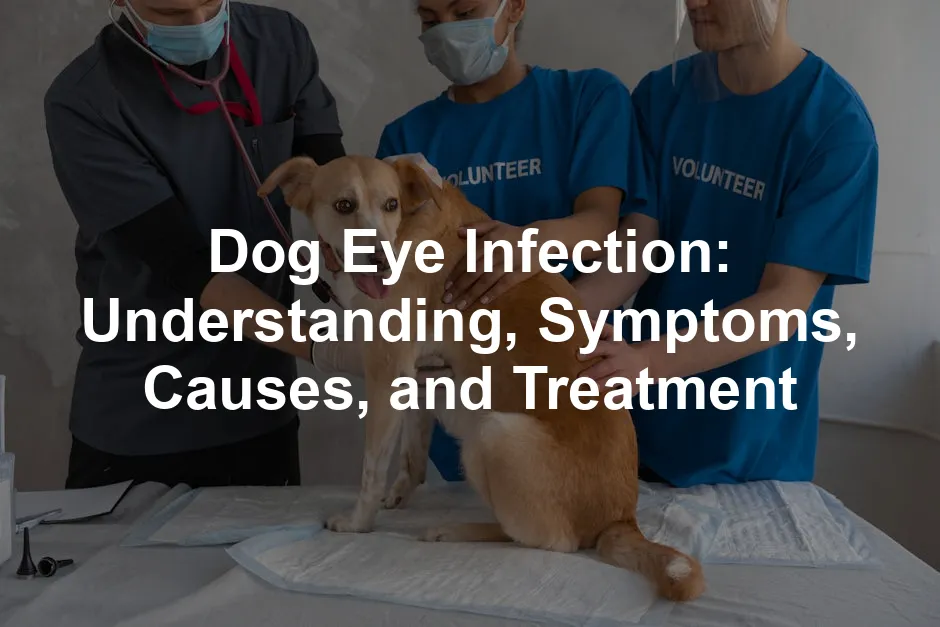Introduction
Dog eye infections are a serious concern for pet owners. These infections can lead to discomfort and complications if left untreated. Recognizing symptoms early is crucial for effective treatment and better outcomes for your furry friend.To ensure your dog’s eyes stay healthy, consider using dog eye drops. These drops are designed to combat infections and reduce inflammation, ensuring your furry friend can see clearly and feel comfortable.
Summary and Overview
Dog eye infections refer to inflammation caused by bacteria, viruses, or fungi affecting the eye’s structures. Common causes include foreign bodies, allergies, and underlying health issues. If untreated, these infections can lead to severe complications, including vision loss. It’s essential to understand the symptoms, such as redness, discharge, and squinting, to seek veterinary care promptly. Early intervention can greatly enhance your dog’s comfort and overall health, making it vital to monitor their eye health continuously.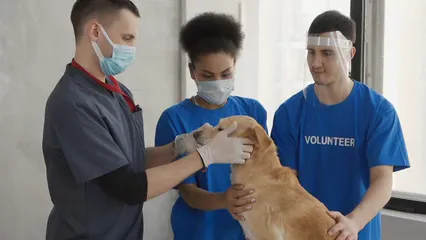
Understanding how to recognize allergic reactions in dogs is essential for pet owners. Learn more about allergic reactions in dogs.
Understanding Dog Eye Infections
What Are Dog Eye Infections?
Dog eye infections are conditions resulting from inflammation due to invading pathogens. They can affect various parts of the eye, leading to discomfort. There are three primary types of infections: bacterial, viral, and fungal. Bacterial infections often cause green or yellow discharge and redness. Viral infections may present with similar symptoms but often accompany systemic issues. Fungal infections, while less common, can occur, especially in immune-compromised dogs. These infections can lead to significant discomfort for your dog. Symptoms may include excessive tearing, squinting, and pawing at the eye. If you notice any signs, it’s essential to seek veterinary attention promptly.To help manage your dog’s eye health, consider a dog grooming kit. Regular grooming helps keep the fur around their eyes neat and tidy, reducing the chances of irritation and infections.
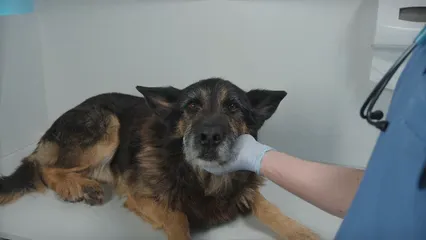
Symptoms of Dog Eye Infections
Common Symptoms to Watch For
Noticing changes in your dog’s eyes can be alarming. Keep an eye out for these common symptoms:- Redness and inflammation: If you see your dog’s eyes looking red or swollen, that’s a clear signal something’s wrong. This could indicate irritation or infection.
- Discharge: Pay attention to the color and consistency. Thick, yellow or green discharge often suggests a bacterial infection. Clear discharge can indicate allergies or irritants.
- Squinting or excessive blinking: If your dog is squinting or blinking more than usual, it might be in pain or discomfort. This reaction often points to an underlying issue.
- Pawing at the eyes: Dogs may instinctively try to relieve irritation by pawing at their eyes. If you observe this behavior, it’s a sign they are feeling discomfort.
- Light sensitivity: If your dog avoids bright lights or seems more comfortable in dim areas, it could indicate sensitivity caused by an eye infection.

When to Seek Veterinary Care
Understanding when to seek professional help is crucial. If you notice any of the following signs, it’s time to contact your veterinarian:- Persistent redness or swelling that doesn’t improve.
- Increased discharge, especially if it smells foul.
- Signs of pain, such as whimpering or reluctance to open the eye.
- Excessive squinting that lasts more than a day.
- Changes in your dog’s behavior, like lethargy or loss of appetite.
And if you’re looking to improve your dog’s overall health, including eye health, consider adding Omega-3 fish oil supplements to their diet. These supplements are known for their anti-inflammatory properties and can support eye health.

Causes of Dog Eye Infections
Common Causes
Dog eye infections can stem from various sources. Understanding these can help prevent future issues. Bacterial, viral, and fungal infections are major culprits. Bacteria can invade through scratches or irritants, leading to inflammation. Viruses like canine distemper can also trigger eye problems. Fungal infections, though rarer, can arise in compromised immune systems. Foreign bodies and irritants often cause discomfort. Dust, grass seeds, or shampoo can irritate the eye, leading to infections if not addressed promptly. Always check your dog’s eyes after outdoor activities. Underlying health issues, such as allergies or dry eye syndrome, can predispose dogs to infections. Allergies often cause inflammation, making the eyes more susceptible to infection. Dry eye, or keratoconjunctivitis sicca, results in insufficient tear production, leaving the eyes vulnerable. Trauma and anatomical abnormalities can also contribute. Injuries to the eye from rough play or accidents can invite infections. Certain breeds, with structural eye issues, may be more prone to infections. Regular check-ups can help spot these problems early. Recognizing these causes helps you take proactive steps. Always consult your vet if you notice any changes in your dog’s eyes. Early intervention is key to maintaining their eye health and comfort.
If your dog is prone to injuries or accidents, a pair of dog goggles could be a game changer. They provide essential eye protection during outdoor activities, reducing the risk of injuries and infections.
Diagnosing Dog Eye Infections
Examination Process
When you suspect a dog eye infection, a veterinary visit is essential. Here’s what to expect during the examination. Your vet will begin with a thorough physical exam of your dog’s eyes. This includes checking for redness, swelling, and discharge. They’ll observe your dog’s behavior to assess any signs of discomfort. Common diagnostic tests may follow. Tear production tests, like the Schirmer tear test, measure how well the eyes produce tears. This helps identify conditions like dry eye. Fluorescein staining is another crucial test. It detects corneal scratches or ulcers, which can lead to infections. Accurate diagnosis is vital for effective treatment. Misdiagnosis can lead to inadequate care, prolonging your dog’s discomfort. Your vet may collect samples for lab analysis if an infection is suspected. This ensures the right medication is prescribed. Understanding the examination process can ease your worries. It’s important to remain calm and supportive for your dog. Prompt veterinary attention can make a significant difference in your dog’s recovery and comfort.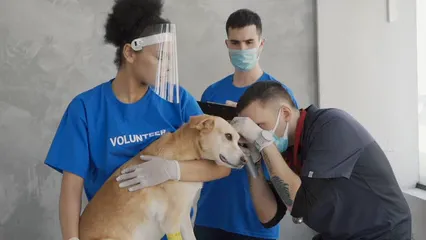
Treatment Options for Dog Eye Infections
Treatment Based on Infection Type
Treating a dog eye infection effectively hinges on understanding the specific type of infection. Each type—bacterial, viral, fungal, and allergic—requires a tailored approach to ensure your pet recovers swiftly and comfortably. Bacterial Infections: These infections often present with yellow or green discharge. Your veterinarian will likely prescribe topical antibiotics or oral medications to combat the bacteria. In some cases, medicated eye drops may be necessary to reduce inflammation and promote healing. Viral Infections: Supportive care is crucial for viral infections. While some viral issues may resolve on their own, your vet might recommend anti-inflammatory medications to ease discomfort. In more severe cases, antivirals may be prescribed if specific viruses, like herpes or distemper, are suspected. Fungal Infections: Though less common, fungal infections can occur, especially in dogs with weakened immune systems. Treatment typically involves antifungal medications, which may be administered topically or orally. Monitoring is essential to ensure the infection clears up completely. Allergic Reactions: Allergies can lead to significant eye discomfort. If your dog suffers from allergic reactions affecting the eyes, antihistamines or steroids may be prescribed. These help alleviate itching and inflammation, providing relief quickly.
Home Care and Management
At home, you can support your dog’s recovery. Start by gently cleaning the area around the eyes with a damp cloth. This helps remove any discharge and prevents irritation. Always follow your veterinarian’s instructions regarding medications and treatment schedules. Avoid using human medications, as they can be harmful to dogs. Instead, rely on the treatments prescribed by your vet. If your dog is given eye drops, ensure you administer them as directed, completing the full course even if symptoms improve. Skipping doses can lead to a resurgence of the infection. Regular check-ups are vital to monitor your dog’s progress. If you notice any worsening of symptoms, contact your veterinarian promptly. The right care and attention can significantly improve your dog’s comfort and speed up the healing process.
For additional peace of mind, consider having a pet first aid kit at home. It’s essential for emergencies and can help you manage situations before getting to the vet.
Preventing Eye Infections in Dogs
Regular Cleaning and Grooming
Keeping your dog’s eyes healthy is essential for their overall well-being. Here are some best practices to help prevent eye infections. Routine grooming is vital. Trim the fur around your dog’s eyes to prevent irritation. Use a damp cloth to gently wipe away any discharge. This simple step can make a big difference.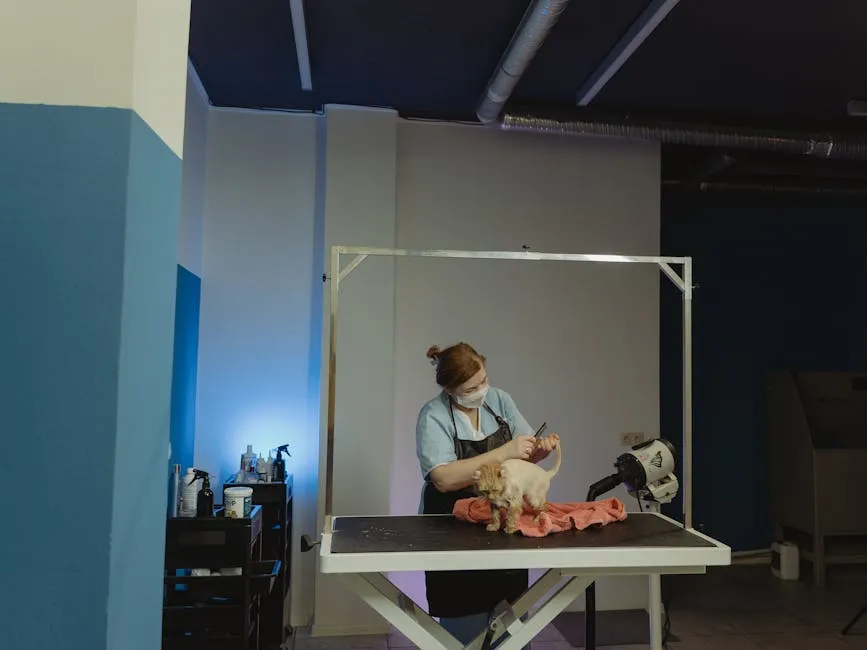
Protecting Eyes from Irritants
Watch for potential irritants like dust, smoke, or chemicals. Avoid exposing your dog to these hazards whenever possible. If you must go into a windy area, consider using dog goggles to shield their eyes.
Routine Veterinary Check-ups
Regular vet visits help catch eye problems early. Your vet can monitor your dog’s eye health and address any concerns before they escalate. Don’t skip those annual check-ups!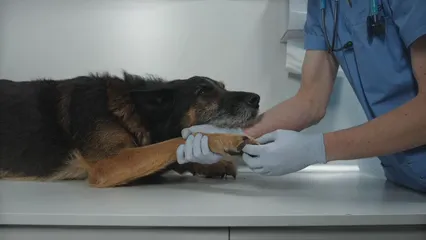
Nutritional Considerations for Overall Health
A balanced diet rich in vitamins and minerals supports eye health. Omega-3 fatty acids, found in fish oil, are particularly beneficial. Talk to your vet about the best diet for your dog’s needs. Taking these proactive measures can significantly reduce the risk of eye infections in dogs. Keeping your furry friend healthy and happy is worth the effort!
For added nutritional support, consider dog vitamins and supplements to enhance your pet’s overall health. These can provide the additional nutrients your dog needs to thrive.

Conclusion
In summary, recognizing and addressing dog eye infections promptly is crucial. Early intervention can lead to better outcomes for your pet. Regular cleaning, routine vet check-ups, and a healthy diet are key to maintaining your dog’s eye health. Be proactive and attentive to any changes in your dog’s eyes.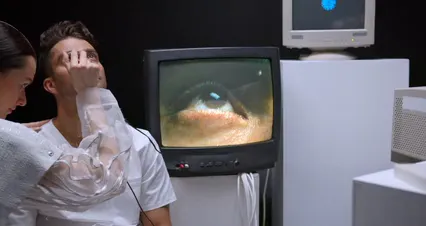
FAQs
Are dog eye infections contagious?
Yes, some eye infections can spread between dogs. Bacterial and viral infections are often contagious, while allergies are not.
Can a dog’s eye infection heal on its own?
While mild infections may resolve without treatment, it’s risky to wait. Untreated infections can worsen and lead to serious complications.
What are the signs of a serious eye infection in dogs?
Seek immediate veterinary care if your dog shows persistent redness, swelling, excessive discharge, or signs of pain.
How long does treatment for a dog eye infection typically take?
Recovery varies based on the infection type. Bacterial infections may clear up in a week, while viral infections can take longer.
Can certain breeds be more prone to eye infections?
Yes, breeds with prominent eyes, like Bulldogs or Pugs, are often more susceptible to eye issues.
What should I do if I suspect my dog has an eye infection?
Contact your veterinarian for an examination and proper treatment. Early diagnosis is key to effective care.
Can I use human eye drops on my dog?
No, using human medications can be harmful. Always consult your veterinarian before administering any eye drops or treatments.
And don’t forget to check out dog car seat covers to protect your car from dirt and fur. It’s a simple way to keep your car clean while traveling with your furry friend!
Please let us know what you think about our content by leaving a comment down below! Thank you for reading till here 🙂All images from Pexels

